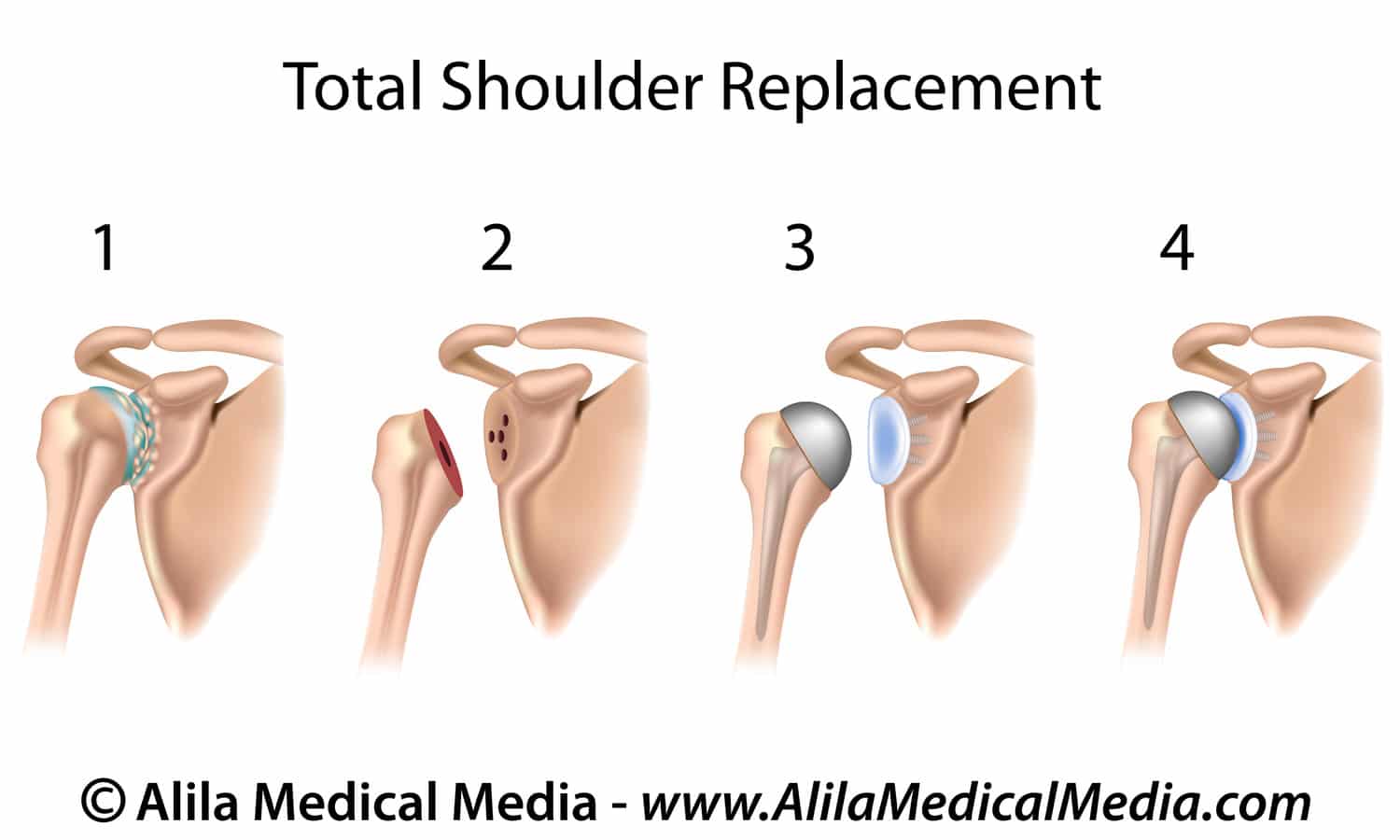
Shoulder Joint Replacement
Total Shoulder Arthroplasty
Total shoulder arthroplasty is a joint replacement surgery for a variety of painful shoulder joint conditions. The ball and socket portion of your shoulder will be replaced with metal and plastic parts that are similar in shape and size to your own shoulder anatomy. The socket portion of your shoulder is replaced with a plastic cup and the ball portion is replaced with a metal ball attached to a metal stem that is placed within the humerus. More recently surgeons are utilizing a less-invasive “stemless” humeral component.
Anatomy of the Shoulder
The shoulder is made up of two joints, the acromioclavicular joint and the glenohumeral joint. The acromioclavicular joint is where the acromion, part of the shoulder blade (scapula) and the collar bone (clavicle) meet. The glenohumeral joint is where the ball (humeral head) and the socket (the glenoid) meet. The rotator cuff connects the humerus to the scapula and is made up of the tendons of four muscles, the supraspinatus, infraspinatus, teres minor and the subscapularis. The deltoid muscle is the muscle that forms the rounded curve of the shoulder. Tendons attach muscle to bone. Muscles in turn move bones by pulling on the tendons. The muscles of the rotator cuff keep the humerus tightly in the socket. The socket, or the glenoid, is shallow and flat. It is rimmed with soft tissue called the labrum that makes a deeper socket that molds to fit the humeral head. The joint capsule surrounds the shoulder joint. It is a fluid filled sac that lubricates the joint. It is made up of ligaments. Ligaments are soft tissue that holds bone to bone. Shoulder injuries can occur to any part of the shoulder.
Common Conditions that Require Total Shoulder Arthroplasty
Your surgeon may recommend total shoulder replacement for the following reasons:
- Osteoarthritis (degenerative joint disease)
- Rheumatoid arthritis
- Post-traumatic arthritis
- Avascular necrosis (osteonecrosis)
- A previous shoulder replacement that was not successful
- Failure of conservative treatments such as anti-inflammatories, cortisone injections, or physical therapy.
Patients with a poorly functioning or torn rotator cuff, an axillary nerve injury, active shoulder infection or severe loss of bone stock on the socket or humerus are not candidates for shoulder replacement.